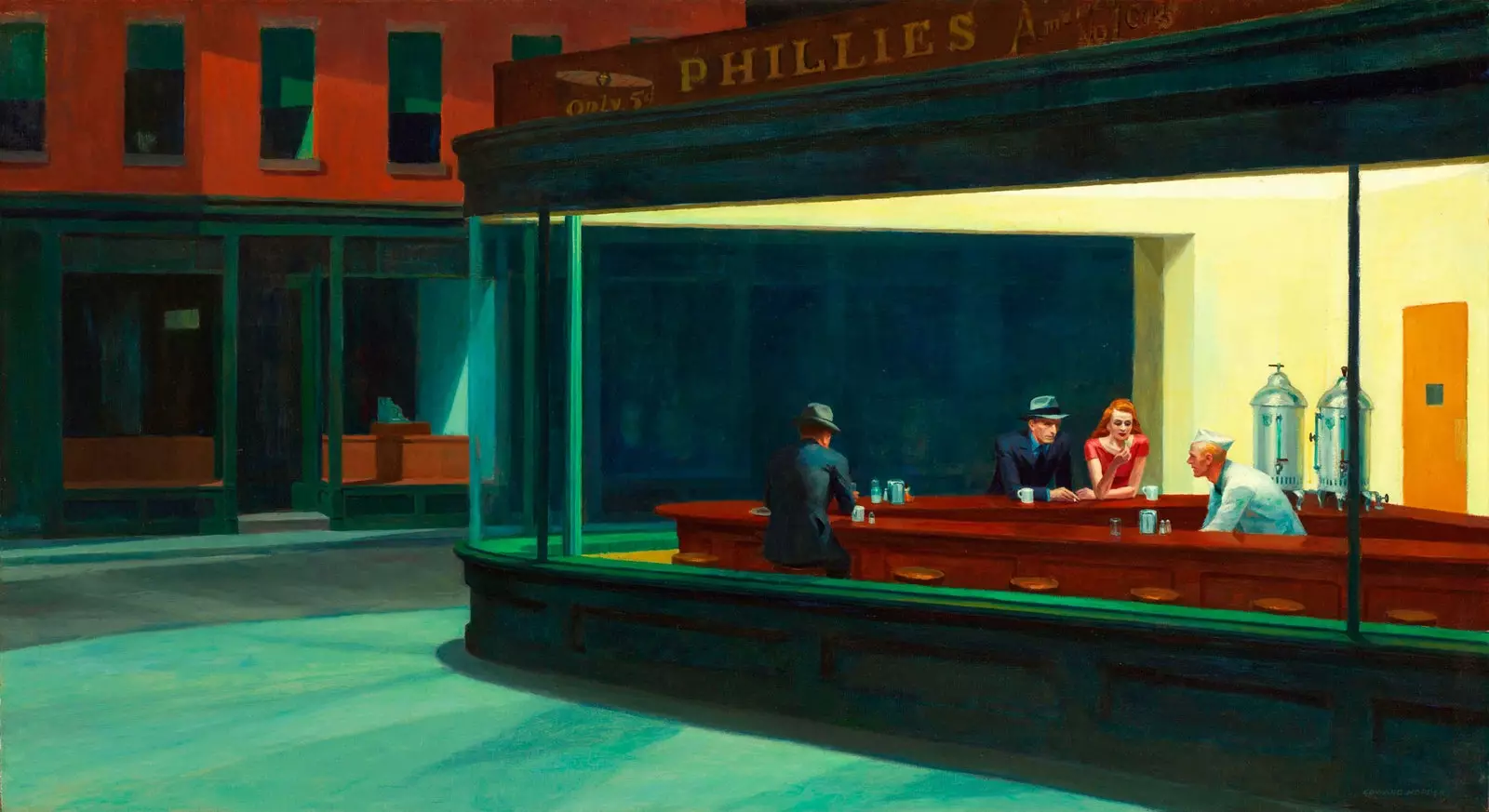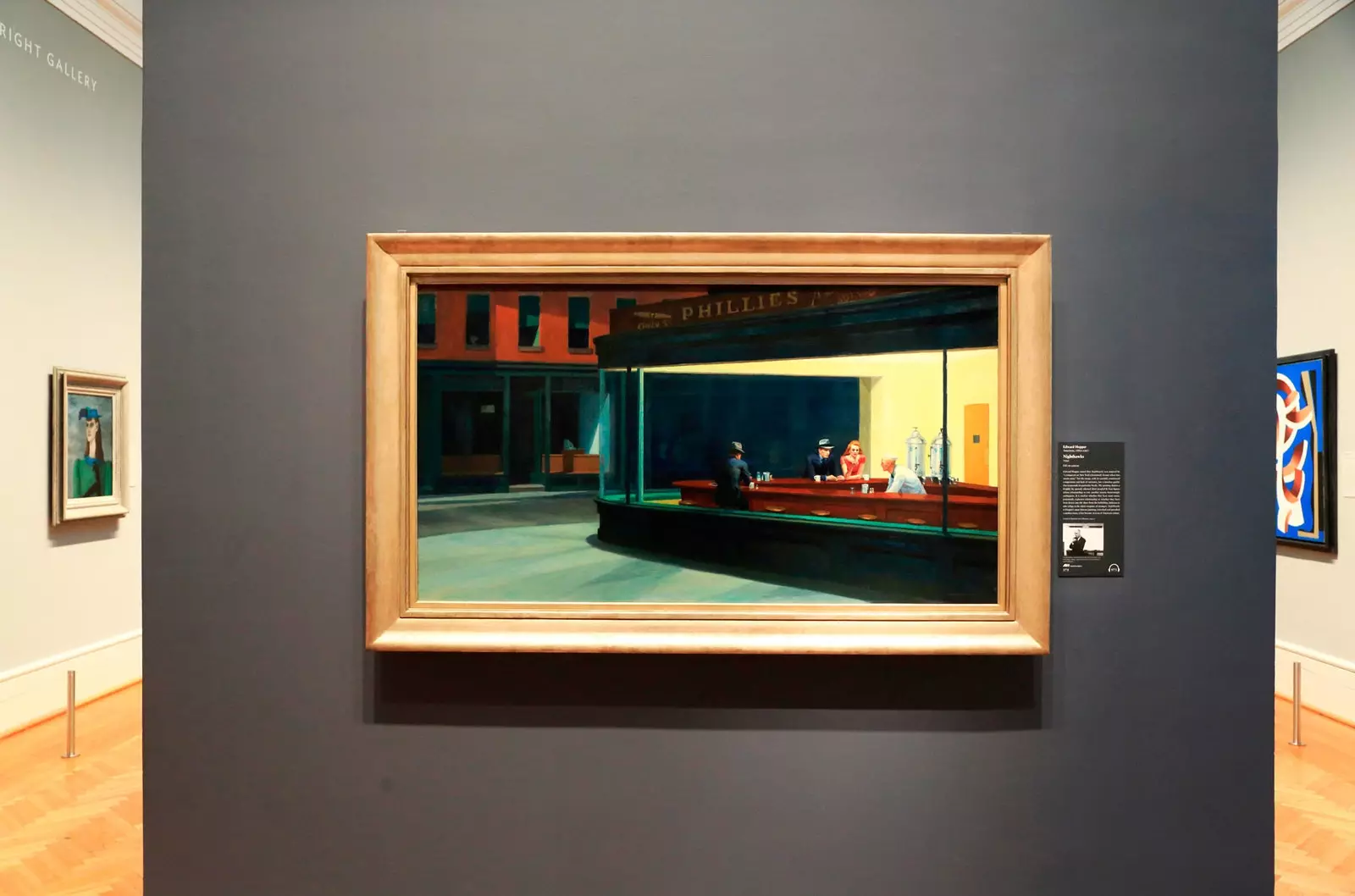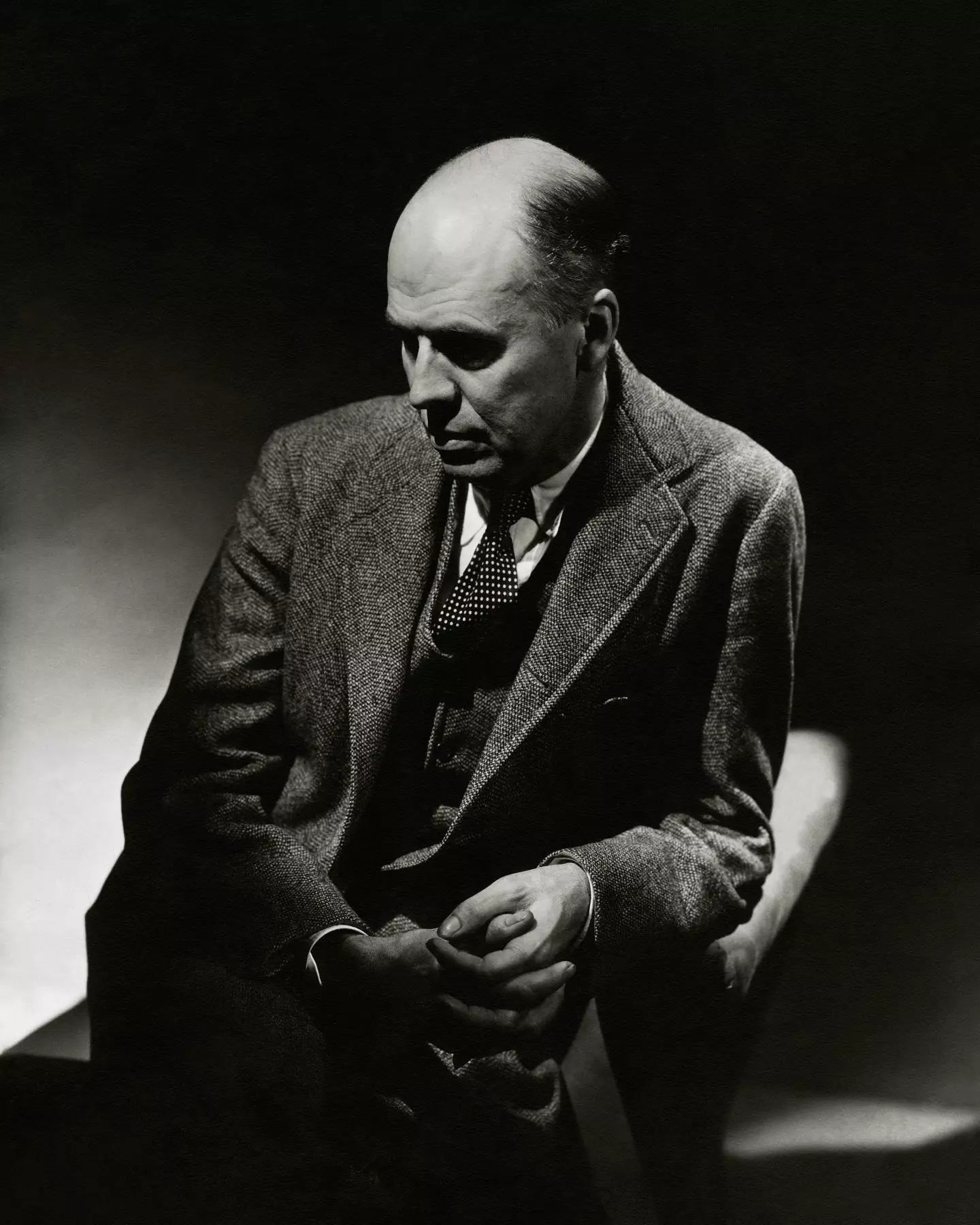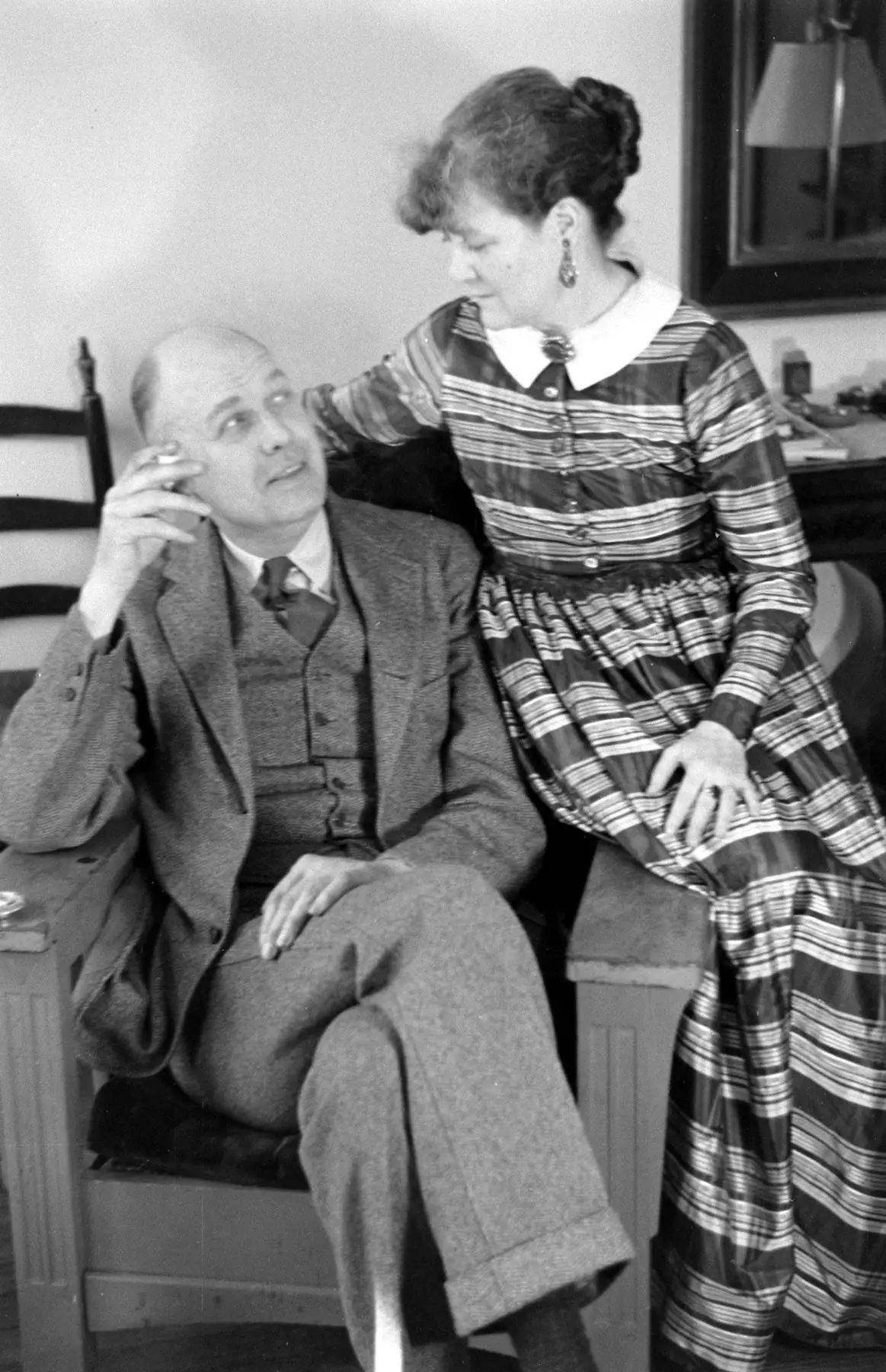
Nighthawks, by Edward Hopper, 1942
The street is empty. It is night. The light from the diner, Phillie's, spills over the sidewalk. Behind the glass, a couple is sitting at the bar. She eats a sandwich. He smokes. They drink coffee. They are not in a hurry. A man in a hat rests his elbows on the counter. The waiter turns his head toward them, but the conversation hasn't started, or has ended. The noise of cups, glasses, plates is the only sound in the room. Perhaps the slight hum of the fluorescents.
'Nighthawks', which could be translated as 'Night owls', is the most famous work of Edward Hopper. He painted it in 1942. It was based on a restaurant in Greenwich Village, in New York, where he lived. “I simplified the composition and made the restaurant bigger. Unconsciously, it is likely that he was painting the loneliness of a big city" , he mentioned him in reference to the scene.
Hopper always denied the psychological content of his paintings. He stated that art is the expression of the inner life of the artist, the result of his vision of his world. He was faithful to this principle. His gaze reflects a haunting and lonely America. His works speak, like a random frame from a film noir, of what has not yet happened. **The suggestion lies in what is not shown. **

'Nighthawks' is exhibited at the Art Institute of Chicago.
From a middle-class family Edward studied at the Parsons School with masters of American Impressionism, such as William Merrit-Chase and Robert Henri. His first jobs were linked to advertising. Illustration and poster design marked the sharpness in focus of his oil pieces.
In the 1920s he traveled to Europe. He was not interested in Cubism nor did he come into contact with avant-garde circles. He visited the museums. He was impressed by Rembrandt's 'The Night Watch'. "Most powerful thing I've ever seen," he said.
From post-impressionism he took urban landscapes, the anonymity of faces and saturated colors. In his New York studio he translated the imagery of the cafes and streets of Paris into American reality. He asserted himself in realism and against the abstract, which he always harshly criticized.

Edward Hopper in Vanity Fair (1934)
In 'Noctámbulos' one could trace the influence of 'The Absinthe Drinker', by Degas, or Picasso's blue period paintings. Baudelaire, poet of the city, emphasizes the same motif in 'El spleen de París':
“At dusk, somewhat tired, you wanted to sit down in front of a café on the corner of a new boulevard […] The coffee glowed. Even the gas displayed there all the ardor of a premiere, and illuminated with all its strength the blinding walls of whiteness.
Hopper deals with the same theme, but takes it to a place that speaks to us of an inner universe that he reclaimed for art. Under his gaze, the light is not festive, as in Baudelaire. Solitude and silence are not the product of marginalization. There is no sleaze on the faces.
The characters close in on themselves. After a day at work or perhaps a date, they meet suspended in a neutral non-place, passing through, delimited by the whitish, flat light that emanates from the wall. They give in to fatigue and fall into apathy, into boredom. They let time pass because their hotel room, or their small apartment, expels them. The home, the domestic, is alien to them.

Edward Hopper with his wife Josephine Hopper
Facing the scene, the observer remains excluded, in the dark. There is no access door. The glass stretches out like a screen in a movie theater. It marks a barrier that can only be seen and guess, intuit.
The man in the hat and the girl in red sitting at the bar are Edward and his wife, Jo, who was his model and agent. Hopper was introverted, brooding, he would spend hours in front of a blank canvas before picking up the brush.
He bought a Dodge and was on the road to New Mexico or the West Coast. He stopped at motels indicated by neon signs. He took notes of characters that disappeared into the night, behind the door of his room. ** he watched them as a voyeur does. **
The influence of 'Noctámbulos' has been extensive in the graphic arts and in the history of cinema. Ridley Scott took her as a reference in 'Blade Runner'; Dario Argento built the Blue Diner in his image in the movie 'Deep Red' and, in the Springfield of 'The Simpsons', a Nighthawk Diner could not be missing from his image.
Hopper's work is part of the global imagination because it speaks of something that every inhabitant of a big city has experienced. Who has not felt loneliness after a failed day? Who has not sought refuge on the street, in a bar, under the neon lights?
'Nighthawks' is exhibited at the Art Institute of Chicago.
